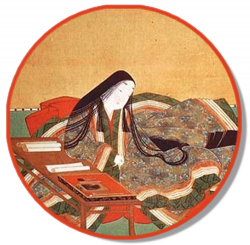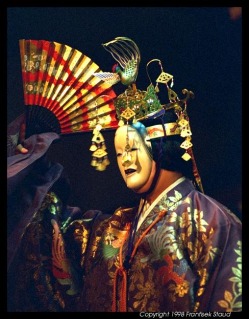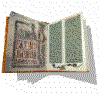Japanese Literature

The 800s was a great period of literature in Japan. They adopted the Chinese writing system, but they later developed a system of their own writing, using certain characters for different sounds. One of Japan's finest writers was Lady Murasaki Shikibu. She had a brilliant mind and great writing skills, which brought her to the imperial court. There, she studied the people around her. Her most famous story was The Tale of Genji, about the life of a prince in the imperial court. Earlier books were generally collections of stories or retold myths. Murasaki's book, however, was long and realistic. It focused on one individual. These characteristics made it the world's first important novel. Another form of literature in Japan was poems. Poets often wrote about the sadness of rejected love or the beauty of nature. A couple of Japan's most known poems are very short compared to other countries'. These are called haikus. A haiku is a type of short, Japanese poem consisting of only 17 syllables, which has three lines of five syllables, seven syllables, and then five syllables. It doesn't rhyme. However, some of the modern haikus don't follow the traditional pattern. A very famous haiku poet was Matsuo Basho. He wrote poems that had the quiet, reflective spirit of Zen Buddhism.
Check out this website of Basho's poems
Check out this website of Basho's poems
Japanese Drama

Originally, drama started with religious Shinto dances and from there developed. One type of drama was noh. These plays were often re-tellings of legends and folktales. Actors wore differently painted wooden masks to show different emotions and characters. Some types are the ghost spirit mask, the fierce god, and the old man. Most actors were men. They used gestures, music, and costumes to tell the story vividly. The plays were performed for both the upper and lower classes. Another form of drama was kabuki. This was a combination of melodramatic singing and dancing. There were elaborate costumes and heavy make-up. It was more informal than noh. Originally, both women and men were allowed to act. Then, in the Edo period, it was claimed unethical for females to act in this drama. So, women were forbidden to act in kabuki. This law still stands. Kabuki plays are about historical events, moral conflicts, love relationships and also themes dealing with common people. This is why it was more popular among the lower classes. Both noh and kabuki remain popular in Japan.
Watch these noh and kabuki performances:
| noh_theater_video.mov |
| kabuki_video.mov |

